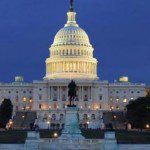The Federal Reserve has decided to leave its target interest rate unchanged at a range of 0.25% – 0.5% while suggesting that a hike later in the year was very likely. This article presents the differing points of view of two former Fed officials as to whether it was the right call or not.
– 0.5% while suggesting that a hike later in the year was very likely. This article presents the differing points of view of two former Fed officials as to whether it was the right call or not.
The comments above and below are excerpts from an article by Mark Sniderman & Sheila Tschinkel which may have been enhanced – edited ([ ]) and abridged (…) – by munKNEE.com (Your Key to Making Money!)
to provide you with a faster & easier read.
The Federal Open Market Committee (FOMC)…said a string of recent economic data show growth is picking up but not enough to convince a majority of its members to raise interest rates…The FOMC’s so-called dot plot, however, (which reflects its outlook for the path of monetary policy) shows that members still expect it to raise rates a quarter point in 2016. The committee meets next in November, but economists believe December is more likely for a rate hike.
The case for raising rates now – Mark Sniderman, Case Western Reserve University
- On a tactical level, the vote lays bare the strong differences within the committee regarding the timing of this rate hike.
- And, far more important, committee participants lowered their collective estimates of longer-term economic growth – from 2% per year to 1.8% – and, at the same time, revised down how much they expect interest rates to rise in the next few years.
- The nation’s unemployment rate – at 4.9% – characterizes a labor market essentially at full employment.
- The core inflation rate – at 1.6% – is fairly close to the FOMC’s goal of 2% over the medium term.
- In addition, most FOMC members expect the U.S. economy to continue expanding at a rate consistent with its potential growth rate. In other words, from a macroeconomic viewpoint, the economy is doing about as well as it can.
- real GDP growth so far this year has been steadily revised lower.
- estimates of future growth – along with the outlook for interest rates – have steadily tracked lower and, in addition,
- there is no evidence that growth in consumer prices – inflation – is accelerating.
- increasing rates now so there is room to stimulate the economy if needed down the road (in case of recession) is a spurious one.
- Raising rates now would actually make such a downturn more likely, so creating the ability to respond to a self-induced recession is not a good scenario
- holding interest rates at such a low level for such a long time – it’s been almost eight years since the target rate was above 0.5 percent, which is unprecedented – no doubt creates risks.
- It pushes people into risky investments as they search for earnings, and
- it creates pressure on pension funds and the like.
 munKNEE.com Your Key to Making Money
munKNEE.com Your Key to Making Money